1. Rise of Stalin
1.1. Rise of Communism
1.1.1. Impact of WWI and the TSAR
1.1.1.1. many protests on the streets
1.1.1.1.1. Russians wanted to end the war because of food and coal shortage
1.1.1.1.2. Farmers wanted land (fairer distribution)
1.1.1.1.3. Russians wanted food (Bread Riots) as most food were sent to feed the soldiers instead
1.1.1.2. TSAR abdicated on 15th March after realising even his own soldiers did not stop the protest (instead they joined in)
1.1.1.2.1. A Provisional Government was set up.
1.1.2. Failure of Provisional Government
1.1.2.1. Lasted only 8 months
1.1.2.2. Its main job was to govern Russia until it was ready for a NEW PARLIAMENT
1.1.2.2.1. FAILED. why?
1.1.2.3. Task
1.1.2.3.1. Hold elections for Russians
1.1.2.3.2. grant a full and immediate amnesty to political prisoners and exile
1.1.2.3.3. coorperate with the committees of workers, peasants, soldiers (soviets)
1.1.3. October 17 Revolution
1.1.3.1. Led by Lenin although the Provisional Army ordered for his arrest
1.1.3.1.1. Lenin established the FIRST COMMUNIST REGIME!
1.1.3.2. Provisional Government latter depended on Bolshevik's help to fight the Russian Army
1.1.3.2.1. On the 6th and 7th Nov, the red guards took over key buildings and arrested members of Provisional Govt.
1.1.4. Bolshevik Victory in the Civil War
1.1.4.1. fought a bitter civil war
1.1.4.1.1. Lasted Three Years
1.1.4.2. reds(bolsheviks) vs whites(anti communists/tsar supporters/social revolutionaries etc)
1.1.4.2.1. Reds led by Trotksy
1.1.4.3. in 1924, former members of the Russian Empire combined to form the Soviet Union or USSR (Union of Soviet Socialists Republic)
1.2. Outwitted his rivals
1.2.1. No one expected him to take over Lenin
1.2.2. Lenin had wanted his will to be read out in which he expressed his views on his possible successors but it was not done
1.3. Pretended to be Close to Lenin
1.3.1. tricked Trotsky into missing Lenin's Funeral
1.3.1.1. Gave him a wrong date
1.3.1.2. Many party members were angry with Trotsky for not appearing at the Funeral
1.3.2. Gave himself the role of the Chief Mourner in the Funeral.
1.4. Trotsky's weaknesses
1.4.1. Arrogant and compacent
1.4.1.1. did not see the need to gather and attract more support
1.4.2. had only a narrow base of support
1.4.2.1. only from soldiers/students and youths
1.4.3. his idea of world revolution did not go down well with the masses
1.4.3.1. The people were more concerned that the basic needs of the people were met first!
1.5. Made alliances
1.5.1. form alliances with other party members to drive his enemies out
1.5.1.1. Made use of Kamenev and Zinoviev to get Trotksy out.
1.5.1.1.1. He would later turned against them
1.6. Use his position as a General Secretary
1.6.1. had the power to appoint his own supporters as officials
1.6.1.1. Thus many officials owe their position to him thus was loyal
1.6.1.2. able to pack a 1925 meeting with his supporters - voted Trotsky out of the party!
1.6.2. controlled the local party committees
2. Riots and resistance
2.1. Stalin responded by killing 17 million horses to pressure people into the use of tractors
3. confessed to charges as they were threatened and pressured from within
4. Multiple Lands were joined and 90% of harvest given to the government while they are allowed to keep 10% for themselves. The government would then share the profits with everyone!
5. Stalin's Plans
5.1. Collectivisation
5.2. Industrialization
5.2.1. 5 Year PLans
5.2.1.1. Total of Three 5 Year Plans wwere carried out
6. IMPACT OF STALIN's RULE
6.1. Collectivisation
6.1.1. Famine
6.1.1.1. Severe Food Shortages
6.1.1.2. USA offered help but Stalin rejected
6.1.1.3. Getting rid of people who oppossed collectivisation
6.1.1.3.1. sent to Gulags
6.2. Industrialisation
6.2.1. Poor Work Conditions
6.2.2. System of rewards/trainings
6.2.3. Changing living conditions
6.3. Rule of TERROR
6.3.1. Fear and suspicion
6.3.1.1. Anybody could denounce anybody and just report to NKVD
6.3.2. Mass Executions
6.3.2.1. 20 million Russians became victims
6.3.3. Religious Persecutions
6.3.3.1. Stalin thought that religion promoted harmful superstitions
6.3.4. PURGES
6.3.4.1. wrongfully accused people to remove his threats
6.3.4.2. E.g Kamenev
6.3.5. Show Trials
6.4. Tight control over culture
6.4.1. New node
